We were unsure what to expect of the Everglades before our visit here. When I thought of the Everglades, scenes of Miami Vice or CSI Miami (to be a bit more current) on an airboat, or the terrible ValueJet Flight 592 crash that occurred here in 1996, came to mind. My imagination was quickly corrected as we drove through Everglades National Park. Defined by water and seemingly endless prairies, it is certainly not your “typical” park. Consisting of grassy waters, the Everglades is extremely flat, as we saw at Shark Valley. And although it doesn’t seem like this area is in a valley, it is. An elevation change of just 1 ft here makes a huge difference in the ecosystem, and the changes were very obvious as we drove and rode along the roads.
But first, why is this place called the Everglades? When early explorers first viewed the Everglades long ago, they saw large fields of grass. So they began to call it the Ever-Glades: Ever from the word forever & Glades which is an old English word that means a grassy open place.
Since we had already seen a portion of Everglades National Park while biking at Shark Valley, we came to explore further its watery wilderness.
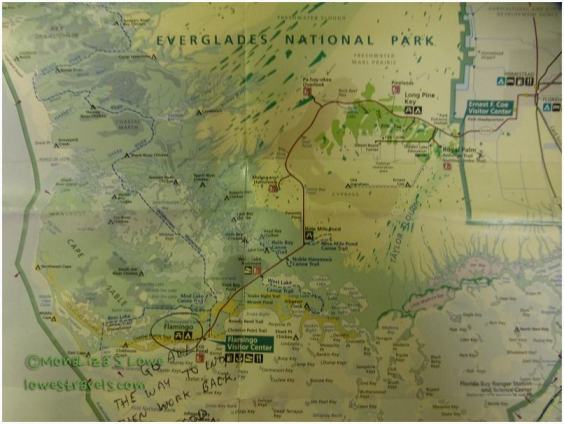
Planning to spend a day in the main park, our friend Judy had suggested that the best way to do so would be to drive all the way to the end of Park Road to Flamingo, 38 miles from the entrance gate. By stopping there and getting familiar with the park along the way, we then had a plan for what we would explore on the way back out. Good suggestion Judy, and also thanks for reminding us to bring our lunch along! Although there is a small cafe that is sometimes open at the Flamingo Visitor Center, you will not find another speck of food anywhere else in this huge park.

Steve and I were wearing shorts and t-shirts, not realizing that recent rains had caused the normally manageable mosquito population to increase. The park ranger warned us that all trails in the area were either “muddy or buggy”, but we followed Bear Lake Trail with the hope of seeing wading birds at the lake. No birds at the lake, and we were pretty much eaten alive by the mosquitoes for our effort. It was an uncomfortable hike through Gumbo Limbo and mangrove trees. The Gumbo Limbo tree is otherwise known as the “tourist tree”, since its peeling red bark looks a lot like a severe sunburn. The hard wood was once used to carve merry -go-round horses and the trees provided rot-proof living fences.
We finally saw a couple of American Crocodiles, and kept our distance from them as they basked in the sun. Unlike alligators, who rarely attack humans and are considered relatively docile if left unprovoked, crocs are more aggressive and likely wouldn’t hesitate to have me for lunch! Their color is lighter, more gray to green, and they have a narrow tapered snout and tend to live in saltier tropical coastal waters. Another difference is that both the lower and upper teeth are visible on a crocodile when its mouth is closed; only the upper teeth are visible on alligators. Alligators are freshwater animals, whereas crocodiles can be found in either fresh or salt water. OK, science lesson complete!
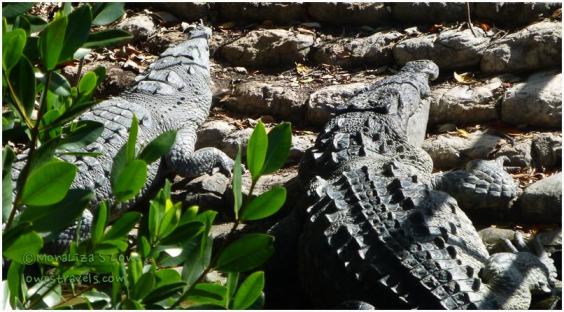
The drive through the scenic park from the Flamingo area toward the entrance gate was quite interesting. We noticed several changes between dense hardwood tropical forest and mangroves…
…to the Dwarf Cypress forests which displayed spindly white trees…
…to the subtropical Slash Pine forest which represented the remains of what once occupied 10 times more of this area.
Following the Pineland Trail, we noticed several trees with odd-colored patches on their trunks. These were lichens which consist of a fungus and an algae living together. They don’t harm the tree, but rather provide a food source for Tree Snails (which were not present that day).
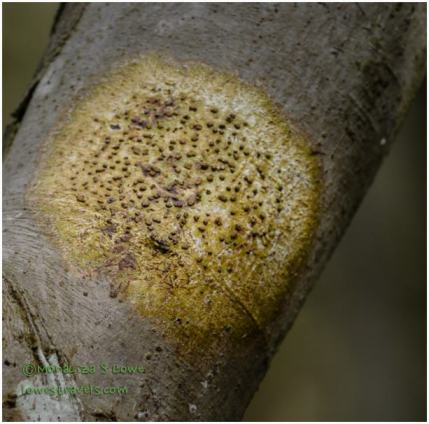
A vast area of the Everglades could be seen from horizon to horizon from the Pa-Hay-okee Overlook.
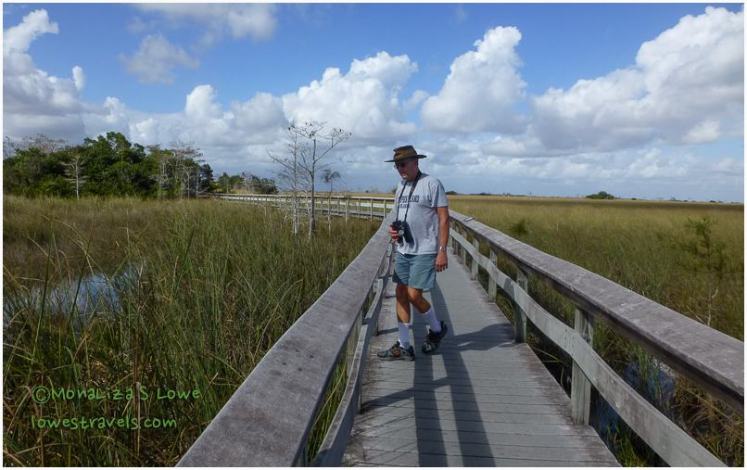 The Everglades is a wild place to explore and see amazing wildlife. Visitors can camp, hike, take a canoe, boat or kayak trip in a slough, or walk with the park ranger on a birding trek to get a front-seat view of the assemblage of wading birds. Coming here fairly unprepared, we were happy to follow the Anhinga Trail to view birds up close. Making our last stop at the Anhinga Trail (it is located near the entrance gate) gave us plenty of time to hang around and watch these birds doing their thing.
The Everglades is a wild place to explore and see amazing wildlife. Visitors can camp, hike, take a canoe, boat or kayak trip in a slough, or walk with the park ranger on a birding trek to get a front-seat view of the assemblage of wading birds. Coming here fairly unprepared, we were happy to follow the Anhinga Trail to view birds up close. Making our last stop at the Anhinga Trail (it is located near the entrance gate) gave us plenty of time to hang around and watch these birds doing their thing.
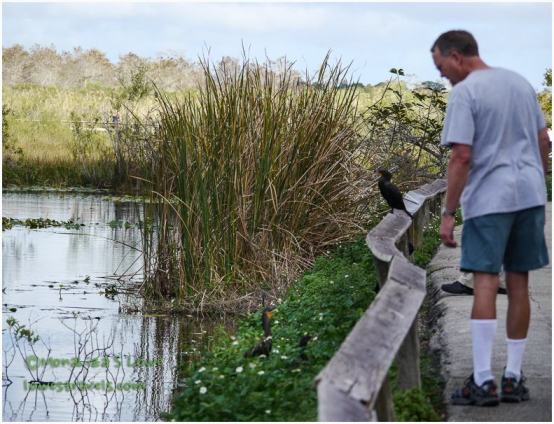
And they were in abundance!
The trail’s namesake – the Anhinga – is a bird that can be seen fishing and sunning itself in the trees beside the trail. There were hundreds of them here!
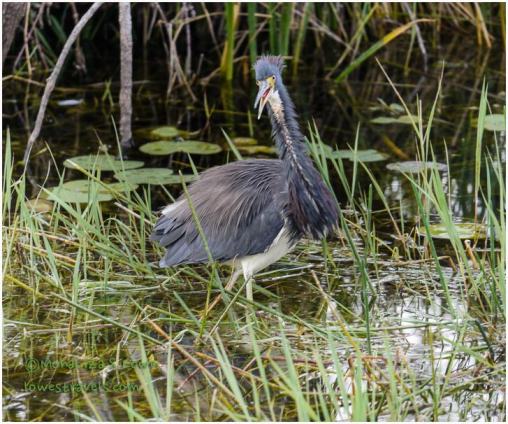
A visit to the Everglades would be incomplete without riding on an airboat, and this is how I had imagined checking out the area all along. So my niece Lea E. – the ultimate hostess – made sure I got to ride on one. We glided over the river of grass, which took us to an ancient Miccosukee Indian Camp. In the 1800’s, when most of the Miccosukee tribe were removed from the west, a few never surrendered and hid in the Everglades. They kept to themselves there for about 100 years, resisting efforts to assimilated. But after the Tamiami Trail highway was built in 1928, the tribe began to accept many New World concepts.
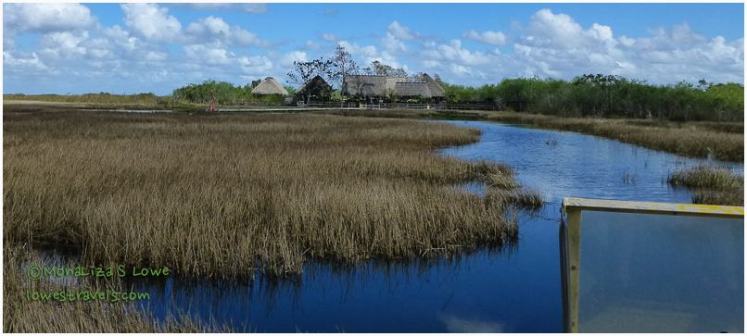
We witnessed a scary and crazy alligator demonstration at the Indian Village, watching in awe as a tribesman kissed, wrestled and taunted an alligator. No volunteers from the audience for this one!
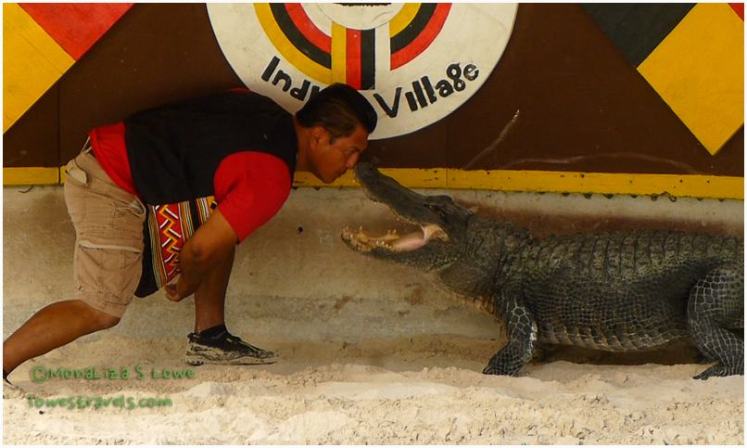
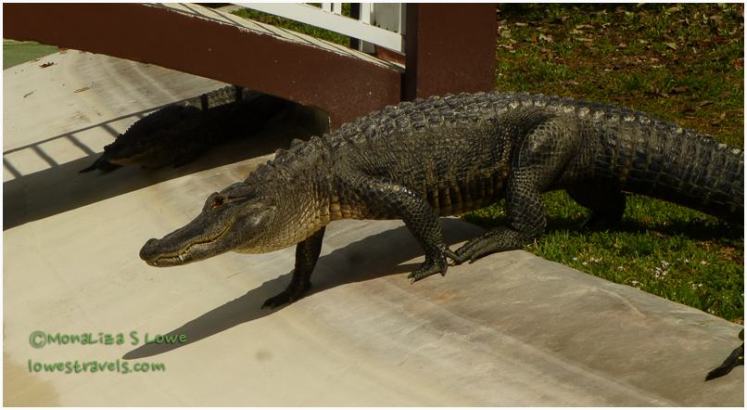
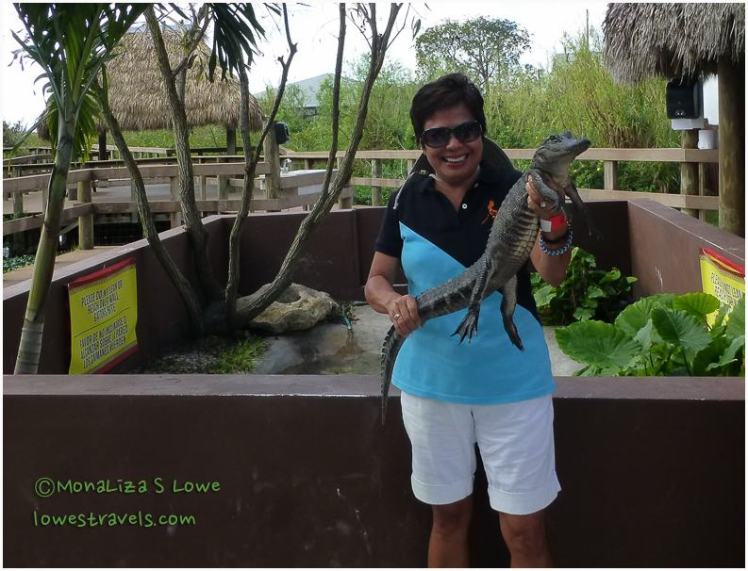
The Everglades, or the grassy waters, or the river of grass, is truly a unique place. We looked very closely and saw thousands of naturally beautiful things that are there – other than the birds! Having experienced and enjoyed the Everglades, I now have a new visual that no longer includes scenes from Miami Vice or CSI Miami.
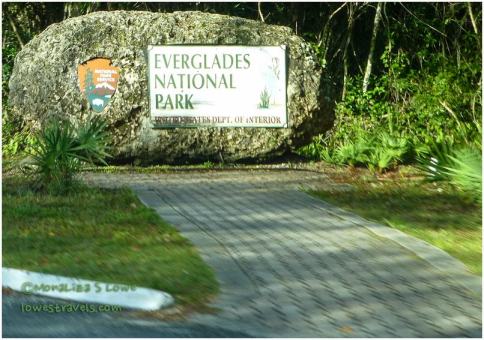





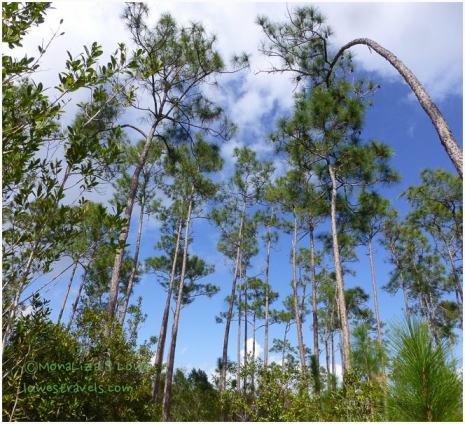







Another great informative and amusing post guys! I can’t seem to keep the difference between gators and crocs in my mind. I know them for a few hours, then they slide right out of my brain. Thanks for reminding me, perhaps the knowledge will stick this time! I have to wonder why Mother Nature created mosquitoes….what purpose do they serve except to drive us wild!
Sue
Your welcome. For once we stayed very far from the crocs and we learned the differences from an illustration at the visitor center. Exactly, no matter what you do, those pesky flying critters know how to harass.
You two are having too much fun!
Yep we are 🙂 plus humidity!
What a lovely photographic post… I love it…
Thank you bulldog!
You always have nice and very informative posts. Thanks.
Glad you are learning something, Fely.
That’s a big smile you’ve got on your face while holding that little ‘gator!
Did you learn the difference between ‘gators and crocs? I never have learned the difference.
–Bob
Bob, yes, we did learn that is why we stayed far from them. The differences are written just above the croc image.
Sounds like you need to keep some bug stuff in your car! Fun to learn the difference between Alligators and crocs. I love the pic of you holding the baby!
That’s a nervous smile 🙂
I agree with the comment that you are having too much fun. This is just incredible what you have captured.
Yes we are having fun despite humidity!
The Lowes finally have a pet. Did you name him? Thanks for the educational post and of course the great bird photos 🙂
Thanks Ingrid, that’s a pet we will never take with us along !
Great pics and informative post, Mona. I remember running along the boardwalk to get back to the car, followed by a mass of mosquitoes. That’s such a cute baby alligator! Good for you to be brave enough to hold him. The American crocodiles are another story. We saw massive ones in Costa Rica, and were told that they will eat anyone who comes close enough. 😯
Ha ha, that is why the area next to them was barricaded. That is actually a nervous smile and after a quick shot I immediately gave it to the tribesman.
I had the Anhinga Trail on our list so we will definitely do it. I finally got to see a Wood Stork today and we did a pole-boat tour. Based on the reviews I had hoped to see many birds, but that was not the case. Those we saw were skiddish and took to flight as soon as we neared. Although it was peaceful and a beautiful day, not sure we would do it again. Love your photo holding that baby gator…brave girl! Enjoy your time in the Keys. 🙂
I was only brave for a brief second! Best time to see the birds either early morning or late afternoon. We were at the Anhiga Trail at the end of the day so they were there!
Glad you had a wonderful trip to Flamingo. But those mosquitoes would keep me in the car. Great photo of the croc!!
I know, and the funny part is that when we arrived home, I found the bug spray in the car! I had so many welts that day 😦
Nice excursion thru the Everglades…..well, minus the mosquitoes!
Wonderful pictures as always. I like your header….cool!
Thanks Gay, the sad part is that the bug spray was just right there in the car. Sometimes we never get our act together.
Amazing post ML. I never knew the meaning of Everglades before. I always learn such a lot from your posts. You are so observant. I’m beginning to think that I’ve gone all round the country in a daze! Thanks for taking me back to the Everglades. Enjoy the Keys!
Thank you Nancy. I never knew the meaning too not until we came here. The visit erased all my misconception of the everglades.
Wow!! Did this post and the one from Shark Valley bring back great memories!! So glad you had a great time – and saw so many different birds. We also ended our day at the Anhinga Trail, and could barely force ourselves to depart! Walked by your spot at IBE today – no Steve and ML 😦
Enjoy your last couple of days in the Keys!
Thanks Judy, and your recommendations worked pretty well. See you soon again.
Well, I’m catching up on your posts, and always love to read about the Everglades. It’s such a unique place, and the Anhinga Trail has so many birds! A whirlwind tour, but you made the most of it.